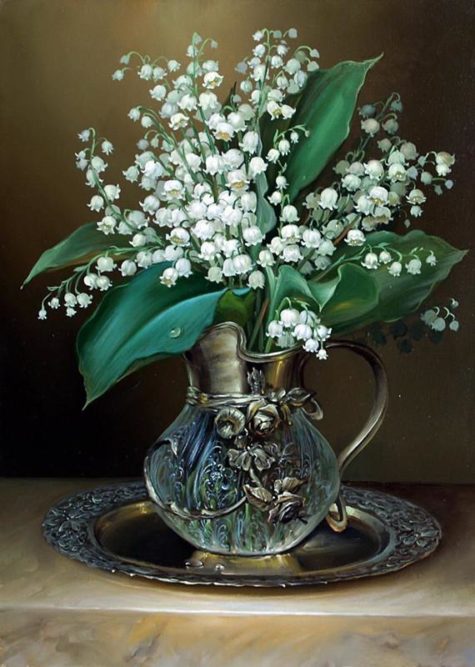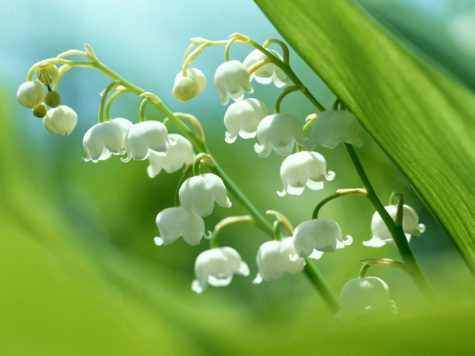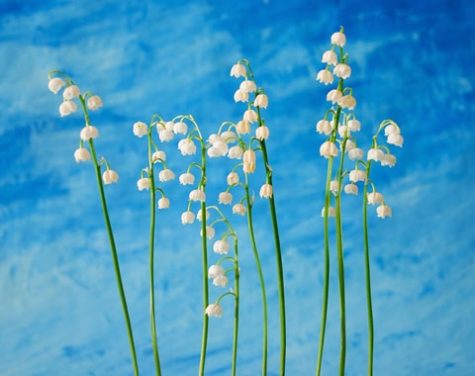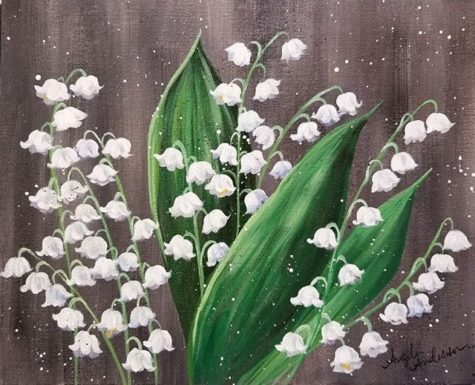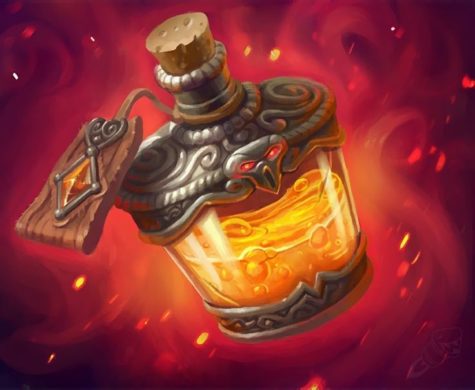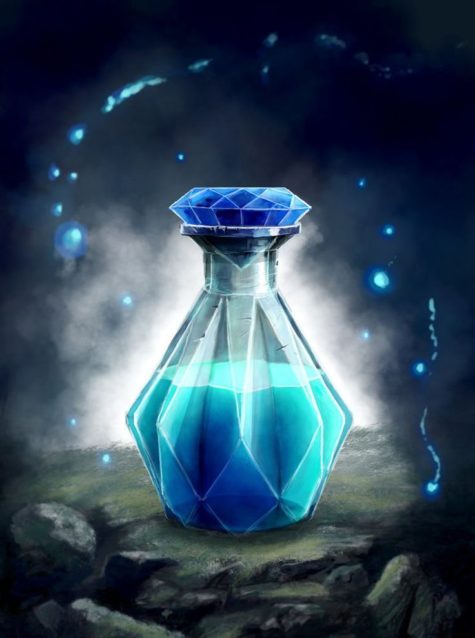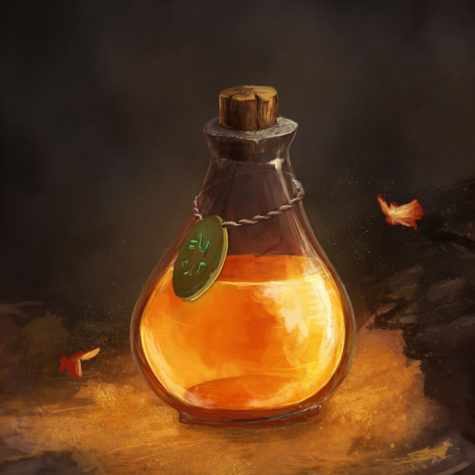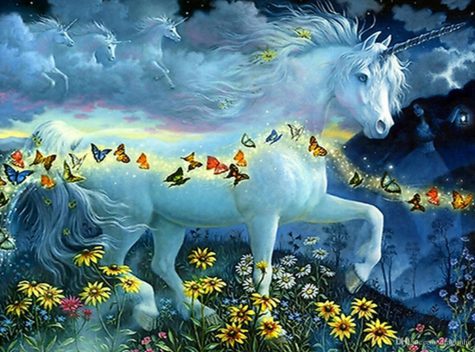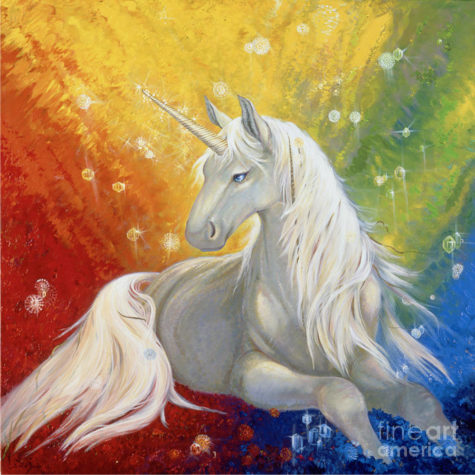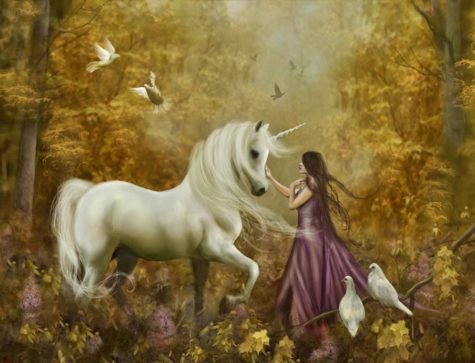Monthly Archives: April 2019
- Parts Used: Fresh flowers
- Planet: Mercury
- Element: Air
- Magickal Influences: Peace, Conscious Mind, Memory, Attracts Fairies
Convallaria magalis, the botanical name for Lily of the Valley means “that which belongs to May,” making lily of the valley the recognized flower of the month of May, and thus, May birthdays. It is also the official flower of the zodiac sign Gemini.
This plant is also known as Little Maybells, May Bells, Mary’s Tears, Our Lady’s Tears, Jacob’s Ladder, Ladder to Heaven, Jacob’s Tear, May Lily, Convail Lily, Lily Constancy, Muguet, Male Lily, Convallaria, and Fairy Cups.
The well-known and dangerous effects of lily of the valley apply to its internal use, but not to its fragrance. Don’t eat, drink, add to your bath water, or rub into your skin.
Lily of the valley is a fragrant flowering plant used in religious ceremonies, world celebrations, perfumes and in gardens. Also known as the May lily, the name means “return to happiness” and most often symbolizes chastity, purity, happiness, luck and humility. Its meaning and symbolism are represented in Christian lore and folklore, on May Day, weddings and birthdays, and in various celebrations throughout the world.
This tiny plant produces sprays of white, bell-shaped flowers that emit what Culpeper calls a “pleasant, grateful scent.” The aroma instills peace and strengthens the conscious mind. With visualization, the scent will heighten your ability to recall old information and strengthen your powers of memory.
Although the cut flowers are occasionally available in florist shops in springtime, no true lily of the valley essential is available.
This European native plant was first cultivated in 1420 and is beloved by the Fae and humans alike. It is sometimes called Fairy Cups, because the flowers look like cups the fairies have hung up while dancing. The flowers are said to ring when fairies sing and to form ladders fairies use to reach reeds from which they weave their cradles. Obviously, this is a good plant for attracting the Folk to your magickal garden.
According to folklore, this plant blooms on the grave of someone who was executed for a crime they did not commit. It is thought that planting them in the garden will protect the home from ghosts and evil spirits. Although some people consider it bad luck to bring the flowers into the house, in France, people still trade gifts of this plant on May Day in order to have good luck through the year.
The scent of this flower is said to attract nightingales and to give people the power to see a better world.
In the language of flowers, Lily of the Valley means return of happiness, purity of heart, sweetness, tears of the Virgin Mary, you’ve made my life complete, humility, happiness, love’s good fortune. One legend of the lily of the valley is that it sprang from Eve’s tears when she was kicked out of the Garden of Eden.
As a symbol of chastity, purity, modesty and happiness, lily of the valley has been a popular wedding flower since the Middle Ages. According to legend, its strong fragrance lures the nightingale to find his mate. For some brides, the flower is the fifth item carried during a wedding, along with something old, new, borrowed and blue. In Holland, the flower is planted in a newlywed couple’s garden as a symbol of the renewal of love.
Lily of the valley is supposed to protect gardens from evil spirits and is known to have been used as a charm against witches’ spells. It is also considered the flower of fairies, its tiny bells used as cups from which to drink.
Some European countries believe lily of the valley prompts visions of heaven, aiding man to see a brighter future. In Germany and Scandinavia, the flower is a springtime symbol of good luck. In England, when St. Leonard of Sussex fought his grievous great battle with a dragon during the sixth century, as a commemoration to his efforts, the flowers are believed to have sprung from the ground where his blood spilled.
It is also believed that the flower is in honor of Maia, the daughter of the mythological Atlas, the oldest of the Seven Sisters and the goddess of growth, increase, fields, and spring. She and Zeus are the parents of Hermes (Mercury), and so she is the grandmother of magick, which was invented by her son Hermes. The month of May is named for her, and the 1st and 15th of May are her sacred days. Her worship survives as the celebration of the Queen of May in the Catholic church. In the past, only women were allowed to worship Maia. In ancient Rome, May was a time of purification and religious rituals, so it was a very unlucky month to get married (pretty interesting considering that nowadays lilies-of-the-valley are a standard in the bridal bouquet and represent marital longevity).
Lily of the valley is associated with Gemini because of the Mercury (Hermes) connection. Gemini rules divination and summoning, and since Mercury rules magick, this is a good plant to use for ceremonial magick or divination. You could make a great oil for aiding divination by macerating (soaking) the flowers in almond or olive oil. Make a number of macerations in the same oil to get a good buildup of scent. The lily of the valley perfumes commonly available are made from synthetics. Growing the plant is the only way to acquire a natural perfume of the flowers.
On May 1, 1561, King Charles IX received lily of the valley as a gift of luck and continued the tradition every first of May by giving the women of his court this fragrant flower. Today, every year in France, bunches of lily of the valley are sold on streets. In some cities, on May Day, folks wear a sprig in their clothing. The flower is also a symbol used on International Worker’s Day (also known as May Day), or Labor Day as it is known in the United States. The Finnish girl’s name Kielo means lily of the valley. It is also Finland’s national flower.
Considered a Mercury herb, lily of the valley was in the past used for illnesses of the head or brain, such as melancholy, depression, epilepsy, and stroke. Its decoction was mixed with lavender and peppercorns and spread on the forehead and back of the neck to bring someone to their senses. However, later it became much used as a far less poisonous substitution for foxglove and applied to heart disease. Historically, Germans have made a raisin wine with some of the flowers. This demonstrates that although the plant is toxic, the poison is poorly absorbed. The sap can be a skin irritant, however. Leaves of this plant furnish a green dye in spring and yellow in autumn.
The sweet, bee-attracting flowers appear in May; folk belief says plant tomatoes when you see them appear. It makes a great groundcover around shrubs, especially under lilacs (blooms at the same time). This is a good plant for the corners of your house, where nothing else will grow. It produces berries but reproduces mainly through creeping rhizomes.
Information collected from various sources.
Essential oils for prosperity and abundance can draw more than just money; fertility, time and opportunities are also included. Basil, pine, patchouli and jasmine are effective when used in spells to bring abundance in your life, as long as you program the action with intent. For example, dab a drop of basil or peppermint oil inside your wallet to draw in more money while imagining your wallet filling with crisp $20 bills.
Note: The Aromatherapy for Prosperity page has a lot of information on this subject. If you are interested in using essential oils to bring in money, it’s worth taking a look at.
To enhance your natural psychic tendencies and help you tune in to the thoughts and feelings around you, vetiver, sandalwood and rosemary oils are best for psychic awareness spells. For complete relaxation and contemplation, try valerian oil or lavender oil.
We all have days when we feel vulnerable; peppermint or cinnamon oil will boost your magical protection and self-confidence, while pennyroyal oil used in a courage spell will smooth out the day ahead, allowing you to be at your best.
The unicorn is one of the most famous and endearing of mystical creatures associated with fantasy, mythology, and magic. Images of the unicorn have fascinated people all over the world for centuries. Such a powerful and easily recognized symbol can have an important place in magical practice.
Symbols are integral to our lives, especially for magic and visualization. Often the success of a spell relies heavily on the symbolism that is chosen and how deeply it affects the user. Many people are drawn to magical creatures and have an affinity for certain ones, collecting various images of that particular creature. Since unicorns are among the most popular, here are some ways you can incorporate unicorn symbolism into magical practice.
Even if you have never been particularly fascinated with magical creatures, getting to know them by investigating their characteristics can add a new dimension to your personal power.
First, consider what the creature symbolizes to you. Unicorns have many standard associations, but we can build on this by adding our own personal characteristics or feelings.
For example, I first fell in love with unicorns as a child, so to me they represent not merely innocence, but a playfulness and lightness of spirit, a carefree time. As I grew older, that sense of joy and happiness was tinged with the melancholy moments of adolescence and the unicorn matured with me to become an escape from the sometimes painful events of growing up. But more than anything else, I associate the unicorn with imagination and purity—and the beautiful free spirit we need to recapture to avoid becoming jaded by the sometimes harsh realities of life. In short, the unicorn is hope and possibility.
But you may have different associations and feelings when you look at an image of the unicorn. That’s fine—the point is to use the symbolism for something meaningful to you and to focus on these feelings in your magical practice. Unicorn imagery can be used in spells for healing, peace, comfort, and inspiration. Still others may associate the unicorn with love, or to some they may represent bravery or strength. Choose what the unicorn means to you and incorporate that image into your spells and meditations.
Begin by collecting a variety of images. Or, if you already have a substantial collection, take inventory to see what you have and think of ways you can use them. These items may be statues, drawings, jewelry, clothing, or anything else you can find.
The most basic way to get started is to place a unicorn statue or other type of image on your altar or use it to represent deity. Unicorns have a long history of being associated with spirituality. And of course, statues and images can be placed in other special places in your living and working environment. Wear unicorn jewelry when you need to get in touch with the qualities the unicorn possesses. Place drawings where they can remind you of your goal.
You can anoint statues for special purposes to be placed around your home, in various rooms or outside. This would be ideal for a protection spell. I have a unicorn in almost every room of my house. They’re usually tucked away in a subtle location, but they’re present to remind me of my goal of keeping a youthful spirit and remembering the time when I felt that first touch of magic.
There are other countless ways to incorporate unicorn imagery into your magical practice. Because of the healing associations with the horn, a unicorn image would be excellent in a healing spell or one simply for general health and well-being. Unicorns are often symbols of vitality and strength.
You can also create a unicorn altar with different styles of statues to represent each element. Imagine different encounters with the unicorn for whatever needs you have. If you feel the need for comfort or healing, visualize yourself being healed by the unicorn. Create a detailed scene in your mind and make it as vivid as possible. For strength and confidence, visualize yourself as a unicorn or try a visualization of yourself riding a unicorn to create a feeling of freedom or to relieve stress.
Read about unicorns—history, legends and stories for inspiration. Create unicorn art; even if you don’t have a talent for drawing or painting you can create collages of unicorn images or try sculpting with clay. Write some unicorns stories and poems of your own—create your own myths. If you have children, ask for their help and create a story together.
Cultures all over the world have claimed unicorn stories and legends of some kind. This creature is popular for a reason—it speaks to us on a symbolic level that can be very powerful. Tap into that power by discovering, or rediscovering, what the unicorn means to you.
Source: Llewellyn
